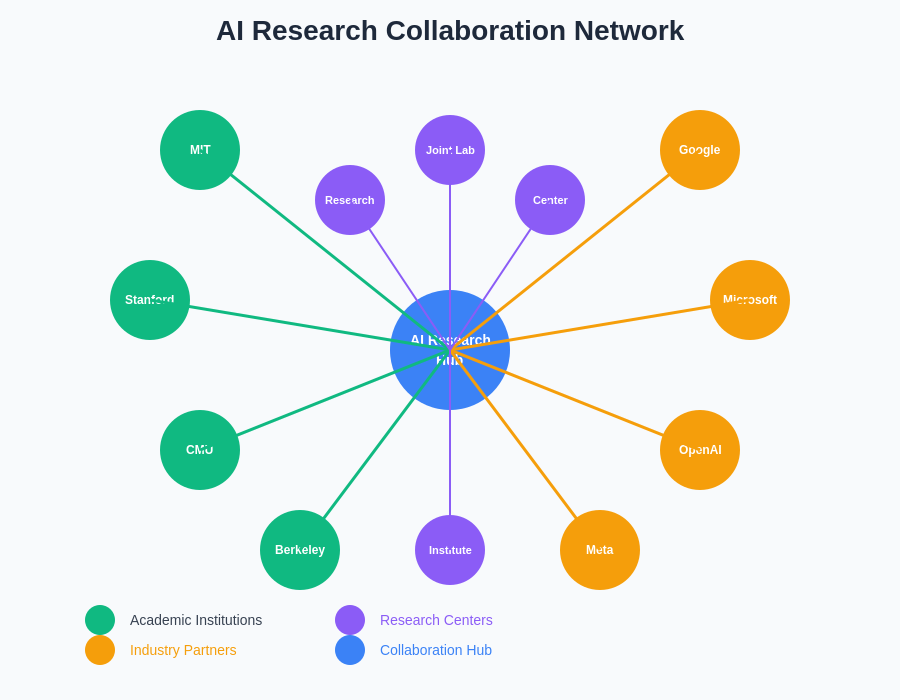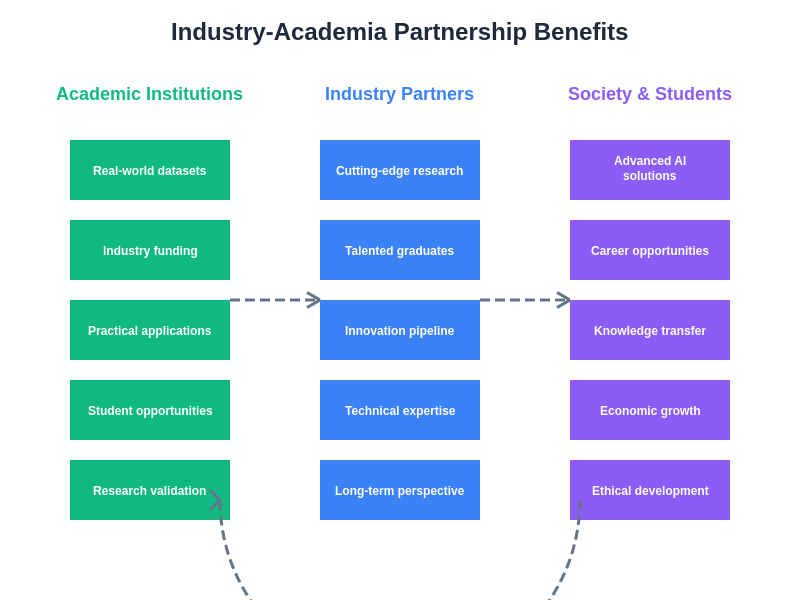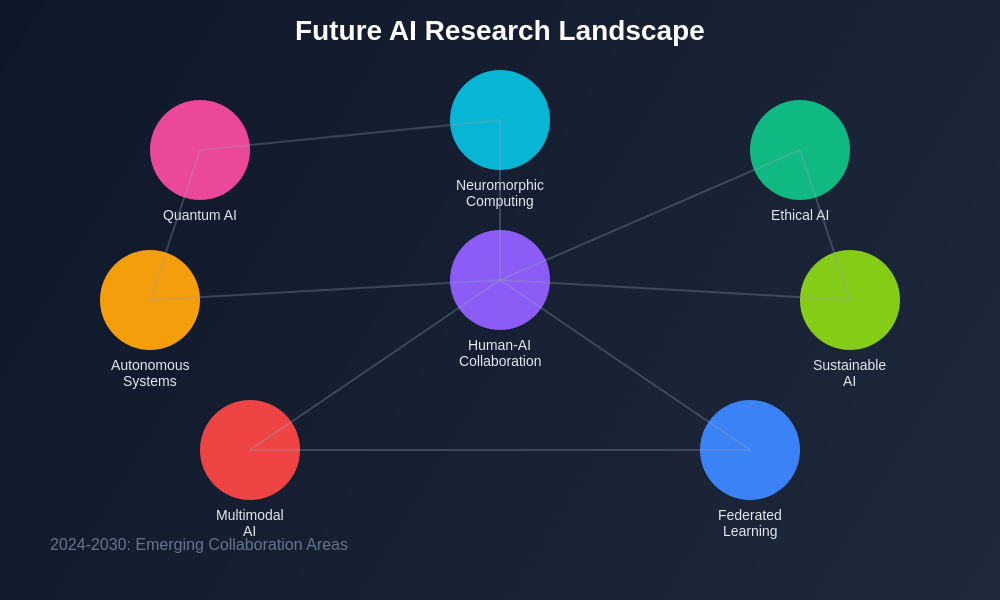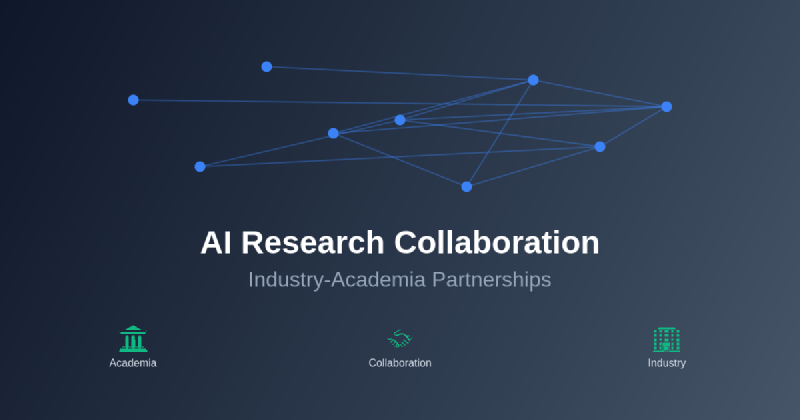The accelerating pace of artificial intelligence development has created an unprecedented demand for collaborative research initiatives that bridge the gap between theoretical academic exploration and practical industrial application. Industry-academia partnerships in AI research have emerged as a cornerstone of innovation, fostering an environment where cutting-edge research meets real-world implementation challenges, resulting in breakthrough technologies that transform industries and society at large.
Stay updated with the latest AI research trends to understand how collaborative efforts are shaping the future of artificial intelligence development. The synergy between academic institutions and industry leaders has become essential for addressing complex AI challenges that require both theoretical depth and practical expertise, creating a collaborative ecosystem that drives innovation at an unprecedented scale.
The Evolution of Collaborative AI Research
The landscape of AI research has fundamentally transformed from isolated academic pursuits to highly collaborative endeavors that span multiple institutions, disciplines, and sectors. This evolution reflects the growing recognition that the most significant advances in artificial intelligence emerge from the intersection of rigorous academic research and practical industry applications. Academic institutions provide the theoretical foundation, research methodologies, and long-term perspective necessary for fundamental breakthroughs, while industry partners contribute real-world datasets, computational resources, and immediate application contexts that validate and refine theoretical concepts.
The complexity of modern AI systems requires diverse expertise that no single organization can provide independently. Machine learning algorithms demand mathematical rigor, neural network architectures require computational optimization, natural language processing needs linguistic expertise, and computer vision applications require domain-specific knowledge across multiple fields. This interdisciplinary nature of AI research has made collaboration not just beneficial but essential for meaningful progress in the field.
Strategic Benefits of Industry-Academia Partnerships
The strategic advantages of industry-academia partnerships in AI research extend far beyond simple resource sharing, creating value propositions that benefit all stakeholders while advancing the broader field of artificial intelligence. Academic institutions gain access to real-world datasets, computational infrastructure, and practical problem contexts that enhance the relevance and applicability of their research. These partnerships provide researchers with opportunities to test theoretical concepts against practical challenges, ensuring that academic work contributes directly to technological advancement and societal impact.
Industry partners benefit from access to cutting-edge research, talented graduate students and postdoctoral researchers, and the long-term perspective that academic institutions provide. Universities often pursue fundamental research questions that may not yield immediate commercial benefits but lay the groundwork for future breakthrough technologies. This complementary relationship enables industry partners to stay at the forefront of technological development while maintaining focus on near-term business objectives and market demands.
Explore advanced AI research with Claude to understand how collaborative partnerships are driving breakthrough discoveries in machine learning and artificial intelligence applications. The integration of academic rigor with industrial pragmatism creates an environment where theoretical advances translate directly into practical innovations that shape entire industries.
Successful Partnership Models and Frameworks
The most effective industry-academia partnerships in AI research operate through well-defined frameworks that balance the distinct cultures, objectives, and constraints of both academic and industrial environments. Joint research centers represent one of the most successful models, where industry sponsors establish dedicated facilities within universities, providing sustained funding, equipment, and personnel while maintaining close collaboration with academic researchers. These centers combine the intellectual freedom of academic research with the practical focus and resource availability of industry partnerships.
Collaborative graduate programs have emerged as another highly effective model, where students pursue advanced degrees while working directly on industry-sponsored research projects. This approach creates a pipeline of talent that understands both academic rigor and industry requirements, while ensuring that research addresses real-world challenges from the outset. Industry mentors work alongside academic advisors to guide student research, creating educational experiences that prepare graduates for careers that span both academic and industrial settings.
Contract research agreements and sponsored research programs provide flexibility for shorter-term collaborations focused on specific technical challenges or research questions. These arrangements allow academic researchers to pursue industry-relevant problems while maintaining intellectual independence and publication rights. The resulting research contributes to both academic knowledge and practical technological advancement, creating value for both partners while advancing the broader AI research community.
Addressing Complex Technical Challenges
The most significant advances in AI research often emerge from collaborative efforts that tackle complex technical challenges requiring both theoretical innovation and practical implementation expertise. Natural language processing research exemplifies this collaborative approach, where academic researchers develop novel algorithms and theoretical frameworks while industry partners provide massive datasets, computational resources, and real-world application contexts. The development of transformer architectures, attention mechanisms, and large language models reflects the successful integration of academic research with industry resources and practical requirements.
Computer vision represents another domain where industry-academia partnerships have driven remarkable progress through collaborative research initiatives. Academic institutions contribute fundamental research on neural network architectures, optimization algorithms, and theoretical understanding of visual perception, while industry partners provide diverse datasets, specialized hardware, and practical applications that validate and refine these theoretical concepts. The resulting advances in object recognition, image generation, and visual understanding have transformed industries ranging from healthcare to autonomous vehicles.

The interconnected nature of AI research collaboration creates a dynamic network where knowledge flows between academic institutions, industry laboratories, and research centers. This collaborative ecosystem accelerates innovation by enabling rapid sharing of insights, methodologies, and breakthrough discoveries across organizational boundaries.
Knowledge Transfer and Technology Commercialization
Effective knowledge transfer represents a critical component of successful industry-academia partnerships, requiring structured processes that facilitate the translation of academic research into practical applications and commercial products. Technology transfer offices within universities play essential roles in identifying commercially viable research outcomes, protecting intellectual property, and facilitating licensing agreements that benefit both academic institutions and industry partners. These offices serve as intermediaries that understand both academic research processes and commercial development requirements.
Joint intellectual property arrangements have evolved to address the complex ownership issues that arise from collaborative research projects. These agreements typically specify how research outcomes will be shared, licensed, or commercialized, ensuring that both academic and industry partners benefit from successful innovations. Fair and transparent intellectual property frameworks encourage continued collaboration by providing clear incentives for both fundamental research and practical development efforts.
Discover comprehensive AI research insights with Perplexity to access cutting-edge information about technology transfer processes and commercialization strategies in artificial intelligence research. The successful translation of academic research into commercial applications requires sophisticated understanding of both technical possibilities and market dynamics.
Overcoming Cultural and Operational Differences
The success of industry-academia partnerships depends heavily on the ability to bridge significant cultural and operational differences between academic and industrial environments. Academic institutions prioritize knowledge creation, publication, and long-term fundamental research, while industry organizations focus on practical applications, competitive advantage, and near-term commercial outcomes. These different priorities can create tension in collaborative relationships unless properly managed through clear communication, shared objectives, and mutual respect for different organizational cultures.
Timeline expectations represent a common source of friction in industry-academia partnerships, as academic research typically operates on semester or academic year cycles while industry projects often require rapid development and deployment. Successful partnerships establish realistic timelines that accommodate both academic schedules and industry requirements, often through phased approaches that deliver incremental results while pursuing longer-term research objectives.
Communication protocols and reporting structures must be carefully designed to meet the needs of both academic and industry stakeholders. Academic researchers value intellectual freedom and the ability to publish results, while industry partners may require confidentiality and competitive protection of sensitive information. Effective partnerships develop communication frameworks that balance these requirements through carefully structured publication agreements, staged disclosure processes, and clear guidelines for handling proprietary information.
Funding Mechanisms and Resource Allocation
The financial structure of industry-academia partnerships significantly influences their success and sustainability, requiring creative approaches to funding that align with the distinct budget cycles and resource allocation processes of both academic and industrial organizations. Direct sponsorship arrangements provide industry partners with significant influence over research directions while ensuring that academic institutions receive sustained funding for long-term research programs. These arrangements often include provisions for equipment acquisition, personnel support, and infrastructure development that benefit both immediate research objectives and long-term institutional capabilities.
Matching fund programs leverage government and institutional resources to amplify industry investments in academic research, creating collaborative funding structures that reduce individual partner risk while maximizing collective research capacity. These programs often require academic institutions to demonstrate institutional commitment through cost-sharing arrangements, while industry partners provide direct funding and in-kind contributions such as datasets, computational resources, or technical expertise.
Consortium models enable multiple industry partners to collaborate with academic institutions on shared research challenges, distributing costs and risks while ensuring that research outcomes benefit entire industries rather than individual companies. These collaborative funding approaches are particularly effective for addressing fundamental research questions that have broad implications across multiple applications and markets.
Talent Development and Career Pathways
Industry-academia partnerships play crucial roles in developing AI talent that possesses both theoretical knowledge and practical experience, creating career pathways that benefit individuals, institutions, and industries. Graduate research programs that integrate industry collaboration provide students with exposure to real-world applications while maintaining academic rigor and research excellence. These programs often include industry internships, collaborative thesis projects, and mentorship arrangements that prepare students for careers spanning both academic and industrial settings.
Joint faculty appointments enable experienced professionals to contribute to both academic research and industry development, creating bridges between theoretical exploration and practical application. These arrangements allow industry experts to share practical knowledge with students and academic researchers while contributing to fundamental research that advances the field. Academic researchers with joint appointments gain valuable industry experience that enhances the practical relevance of their research while maintaining academic freedom and publication rights.
Professional development programs within industry-academia partnerships provide opportunities for continued learning and skill development for both academic and industry participants. These programs often include workshops, seminars, and collaborative research projects that enable knowledge sharing across organizational boundaries while building professional networks that facilitate future collaboration and career advancement.
Addressing Ethical and Social Implications
The collaborative nature of industry-academia AI research partnerships creates unique opportunities to address ethical and social implications of artificial intelligence development through interdisciplinary approaches that combine technical expertise with social science perspectives. Academic institutions contribute theoretical frameworks for understanding AI ethics, while industry partners provide practical contexts where ethical considerations must be implemented in real-world applications. This collaboration ensures that ethical considerations are integrated into AI development processes rather than treated as afterthoughts.
Research partnerships increasingly include social scientists, ethicists, and policy experts who contribute to understanding the broader implications of AI technologies. These interdisciplinary collaborations address questions of algorithmic bias, privacy protection, transparency, and social impact that are essential for responsible AI development. The resulting research contributes to both technical advancement and social understanding of AI technologies.

The multifaceted benefits of industry-academia partnerships extend across research advancement, talent development, economic impact, and social responsibility. These collaborative relationships create value that exceeds the sum of individual contributions, generating innovations that transform industries while addressing societal challenges.
Global Perspectives and International Collaboration
AI research collaboration increasingly operates on a global scale, with industry-academia partnerships spanning multiple countries and regions to address challenges that transcend national boundaries. International collaborations bring together diverse perspectives, complementary expertise, and varied cultural approaches to AI development, resulting in more robust and inclusive research outcomes. These global partnerships often focus on fundamental research questions that benefit from multiple viewpoints and collaborative approaches.
Cross-border industry-academia partnerships face unique challenges related to intellectual property protection, data sharing regulations, and cultural differences in research and business practices. Successful international collaborations develop frameworks that address these challenges while enabling effective knowledge sharing and joint research activities. These partnerships often serve as models for broader international cooperation in AI research and development.
Government initiatives and international organizations play important roles in facilitating global AI research collaboration by providing funding, establishing common standards, and creating forums for information sharing. These efforts help coordinate research activities across national boundaries while ensuring that AI development benefits global society rather than creating competitive disadvantages or technological divides.
Measuring Impact and Success Metrics
Evaluating the success of industry-academia partnerships requires comprehensive metrics that capture both immediate outcomes and long-term impacts across multiple dimensions of research, education, and commercial development. Traditional academic metrics such as publications, citations, and conference presentations provide important indicators of research quality and impact within the scientific community. However, these metrics must be supplemented with measures that capture practical impact, commercial viability, and societal benefit.
Patent applications and licensing agreements indicate successful technology transfer and commercial potential of collaborative research outcomes. These metrics demonstrate the practical value of academic research while providing quantitative measures of innovation and intellectual property creation. However, patent metrics must be interpreted carefully, as not all valuable research outcomes are patentable, and patent quantity does not necessarily indicate impact or commercial success.
Student placement and career outcomes provide important measures of educational impact and talent development effectiveness. Tracking graduate student careers, industry employment rates, and professional advancement helps evaluate the success of collaborative programs in preparing students for careers that span academic and industrial settings. These metrics are particularly important for assessing long-term program sustainability and institutional impact.
Future Trends and Emerging Opportunities
The landscape of industry-academia AI research partnerships continues to evolve in response to technological advances, changing market conditions, and emerging social challenges. Artificial intelligence research is increasingly interdisciplinary, requiring collaboration across computer science, mathematics, psychology, neuroscience, linguistics, and numerous application domains. This trend toward interdisciplinary research creates opportunities for new types of partnerships that bring together diverse expertise and perspectives.
The growing importance of responsible AI development creates opportunities for partnerships that specifically focus on ethical, social, and policy implications of artificial intelligence technologies. These collaborations often involve social scientists, ethicists, legal experts, and policy researchers working alongside technical experts to ensure that AI development addresses societal needs and concerns. Such partnerships are increasingly important for maintaining public trust and ensuring beneficial outcomes from AI advancement.

The evolution of AI research toward more integrated, interdisciplinary, and socially conscious approaches creates new opportunities for collaboration that address both technical challenges and societal implications. This comprehensive approach to AI development ensures that technological advancement serves broader human interests and social benefit.
Building Sustainable Partnerships
The long-term success of industry-academia partnerships depends on developing sustainable relationships that adapt to changing circumstances while maintaining core collaborative principles. Sustainability requires careful attention to partner alignment, mutual benefit, and shared commitment to research excellence and practical impact. Successful partnerships often evolve through distinct phases, beginning with limited pilot projects and gradually expanding to comprehensive collaborative relationships that span multiple research areas and involve numerous participants.
Institutional commitment from both academic and industry partners is essential for partnership sustainability, requiring support from senior leadership, adequate resource allocation, and integration with organizational strategic planning. Universities must recognize industry collaboration as valuable scholarly activity that contributes to research excellence and societal impact, while industry partners must view academic collaboration as strategic investment in long-term technological capability and competitive advantage.
Regular evaluation and adaptation processes help partnerships remain relevant and effective as research priorities, market conditions, and organizational circumstances change. These processes should assess partnership outcomes against established objectives while identifying opportunities for improvement and expansion. Successful partnerships demonstrate flexibility and resilience that enable them to navigate challenges while maintaining productive collaborative relationships.
Conclusion and Strategic Implications
Industry-academia partnerships in AI research represent a fundamental shift toward collaborative approaches that leverage complementary strengths to address complex technical and societal challenges. These partnerships create value that extends beyond individual organizational benefits, contributing to scientific advancement, technological innovation, economic development, and social progress. The success of these collaborations depends on careful attention to partner alignment, cultural integration, resource allocation, and shared commitment to excellence.
The future of AI development increasingly depends on collaborative approaches that combine academic rigor with practical application, theoretical innovation with commercial viability, and technical advancement with social responsibility. Industry-academia partnerships provide frameworks for achieving these complex objectives through sustained collaborative relationships that benefit all stakeholders while advancing the broader field of artificial intelligence.
Organizations considering AI research partnerships should carefully evaluate potential collaboration opportunities, develop clear partnership frameworks, and commit to long-term collaborative relationships that support both immediate objectives and sustained innovation. The most successful partnerships recognize that AI development requires diverse expertise, sustained commitment, and collaborative approaches that transcend traditional organizational boundaries.
Disclaimer
This article is for informational purposes only and does not constitute professional advice. The views expressed are based on current understanding of industry-academia partnerships in AI research and their applications. Readers should conduct their own research and consider their specific requirements when developing collaborative research partnerships. The effectiveness of partnership models may vary depending on specific institutional contexts, research objectives, and organizational capabilities.
